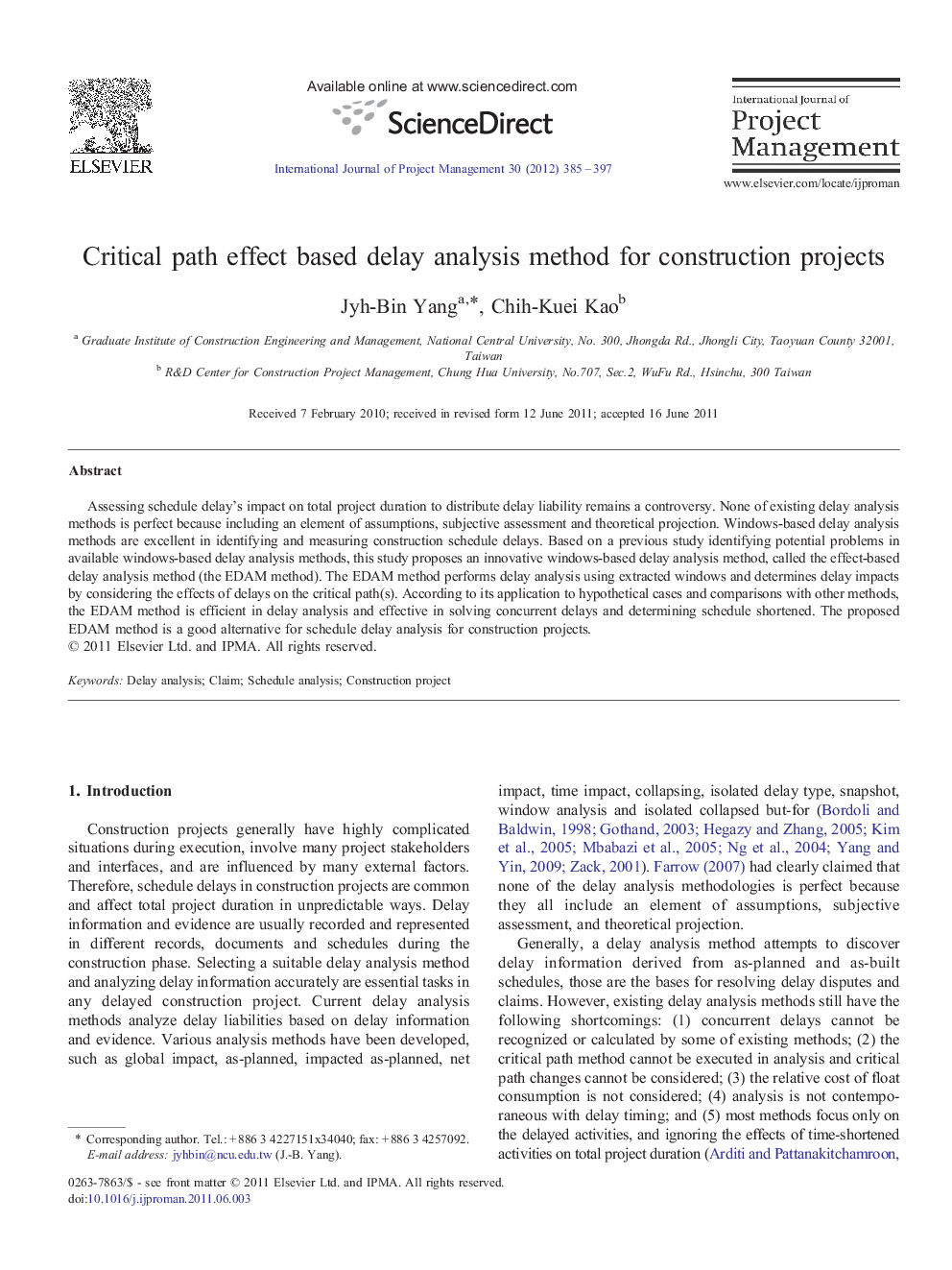| Article ID | Journal | Published Year | Pages | File Type |
|---|---|---|---|---|
| 276792 | International Journal of Project Management | 2012 | 13 Pages |
Assessing schedule delay's impact on total project duration to distribute delay liability remains a controversy. None of existing delay analysis methods is perfect because including an element of assumptions, subjective assessment and theoretical projection. Windows-based delay analysis methods are excellent in identifying and measuring construction schedule delays. Based on a previous study identifying potential problems in available windows-based delay analysis methods, this study proposes an innovative windows-based delay analysis method, called the effect-based delay analysis method (the EDAM method). The EDAM method performs delay analysis using extracted windows and determines delay impacts by considering the effects of delays on the critical path(s). According to its application to hypothetical cases and comparisons with other methods, the EDAM method is efficient in delay analysis and effective in solving concurrent delays and determining schedule shortened. The proposed EDAM method is a good alternative for schedule delay analysis for construction projects.
► EDAM method considers critical path effects in delay analysis. ► EDAM method has a systematic approach for delay analysis stably and efficiently. ► EDAM method is effective in determining concurrent delays and schedule shortened. ► EDAM method has an approach for liability distribution in concurrent delays.
